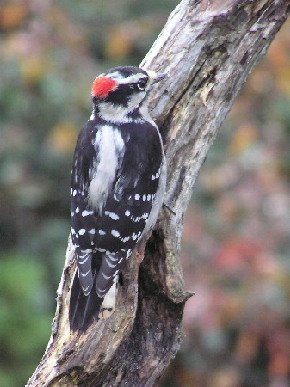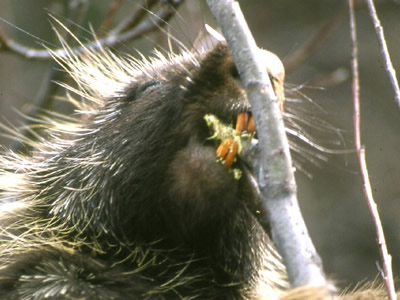|
| |
| Echoes of the Wild |
There are many marvelous moments in nature that so many people do not get the opportunity to experience. In this section, we present to you some of the images of these moments that we feel fortunate to have experienced. We call it Echoes of the Wild.
Come, take a journey with us. |
| |
 |
North America is a vast continent with its unique brands of wildness - from mountains to plains; from the deserts to rocky shores.
We start our travels in the mountains with some of the creatures that must withstand the harshest of climates. |
| |
|
Resonating through the mountain valleys in the autumn, the echoes of the bugle of the bull elk are some of the most haunting and magical sounds of the mountains. Capturing the bugling elk through the viewfinder is a special treat.
Looking for a little romance, the bull elk fight rivals and establishes a harem. Unsuccessful bulls spend the winter foraging together. In the Spring the cows give birth. |
| |
|
Survival in the harsh winters of the mountains can be challenging for elk. However, the healthy ones survive. In the spring the antlers are shed and new ones start to grow each year. After four years a bull elk will usually be the proud bearer of antlers with six points on each side. |
| |
 |
|
 |
A true symbol of the wild is the agile Mountain Goat (left). Inhabiting the most precarious cliffs and rocky areas, these stunning beasts are able to scramble across the most dangerous slopes with amazing skill. Here, sometimes the echo one hears is that of the tumbling rocks, knocked loose by the goats high above.
Mountain Goats grow tremendously thick coats to help them survive the vicious winters. In the Spring they shed, as shown in this image.
Rocky Mountain Bighorn Sheep (right) are more often spotted. Also expert climbers and scramblers, they traverse rocky terrain with ease. |
| |
|
|
|
Another lover of rocky places and rock slides, inhabiting the highest mountain areas is the American Pika.
Hikers may rarely see this small rodent, but often hear its shrill call. |
| |
|
From the smallest to the mightiest: the bears of the wilderness are a thrill to spot and capture through the viewfinder. |
| |
 |
|
Black Bears vary in colour from black to cinnamon brown and honey-coloured.
Their diets are generally 95 percent plant material: leaves, berries and flowers. With their huge paws they can easily dig for roots or upturn rocks to get grubs and insects. |
| |
|
|
And sometimes they are spotted taking care of some of the destruction caused by man.
Here one nibbles on some road kill.
|
|
 |
| |
|
|
|
|
One of the rarely seen animals is the Common Porcupine. They scrape the bark of the trees with their huge and powerful orange coloured teeth and also eat the fresh shoots. This is a rarely seen activity and worthy of a place in this column.
A true echo of the wild. |
| |
|
|
The White-tailed Ptarmigan survives in the chilling snows and harsh conditions of the mountains and the far North.
It changes its appearance as the seasons come and go.
Spotting a ptarmigan is a special treat!
|
|
|
| |
|
|
 |
|
 |
Another year-long resident of the mountains is the delightful Canada Jay, often nicknamed Camp Robber or Whiskey Jack. They are truly delightfully and friendly birds of the mountains.
They breed very early in the year when the snows are still present. The young jays, shown on the left, quickly develop the charming curiosity and boldness which makes them favourites of mountain visitors. |
| |
|
|
|
Although quite different from the Gray Jay, the Clark's Nutcracker is often confused with them. It is bigger however and has a sturdier beak for the food that it enjoys in the higher altitudes. |
| |
 |
__ |
 |
Lucky visitors to the wild areas may hear the sounds of woodpeckers echoing through the forest. Two of the woodpeckers are the Downy on the left, the male and the Pileated, a female. The Pileated is known to attack old wood just for the fun of it and it can destroy old branchesquite quickly! |
| |
|
|
|
| Dereila Nature Inn Home > Naturalist's Nook > Articles, Word Searches, Jigsaws and Other Fun > Echoes of the Wild |
| |
|
|
|
Home | All Things Natural Restaurant | Bird's Nest Lounge | Cyber Room | Lagoon Trail | Naturalist's Nook | Wildflower Garden | Woodlands Pathway
Site Map | Inbox | FAQs | News and Updates | Newsletter Information | Games Room | Privacy Policy
All content © - Dereila and Sage Innovations
|

















